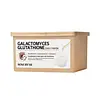What's inside
What's inside
 Key Ingredients
Key Ingredients

 Benefits
Benefits

 Concerns
Concerns

 Ingredients Side-by-side
Ingredients Side-by-side

Water
Skin ConditioningBentonite
AbsorbentKaolin
AbrasiveNiacinamide
SmoothingButylene Glycol
HumectantTalc
AbrasiveTriethoxycaprylylsilane
Theobroma Cacao Shell Powder
AbrasiveCentella Asiatica Extract
CleansingFomes Officinalis Extract
Skin ProtectingSodium Hyaluronate
HumectantHoney Extract
HumectantEthylhexylglycerin
Skin ConditioningPhenoxyethanol
PreservativeAllantoin
Skin ConditioningMentha Arvensis Leaf Extract
MaskingDisodium EDTA
Melaleuca Alternifolia Leaf Oil
AntioxidantCI 77288
Cosmetic ColorantMentha Piperita Oil
MaskingWater, Bentonite, Kaolin, Niacinamide, Butylene Glycol, Talc, Triethoxycaprylylsilane, Theobroma Cacao Shell Powder, Centella Asiatica Extract, Fomes Officinalis Extract, Sodium Hyaluronate, Honey Extract, Ethylhexylglycerin, Phenoxyethanol, Allantoin, Mentha Arvensis Leaf Extract, Disodium EDTA, Melaleuca Alternifolia Leaf Oil, CI 77288, Mentha Piperita Oil
Water
Skin ConditioningDipropylene Glycol
HumectantGlycerin
HumectantNiacinamide
SmoothingMethylpropanediol
SolventGlyceryl Glucoside
HumectantGalactomyces Ferment Filtrate
HumectantGlycereth-26
HumectantErythritol
HumectantPolyglyceryl-10 Laurate
Skin ConditioningHydroxyacetophenone
AntioxidantPanthenol
Skin ConditioningCaprylyl Glycol
EmollientHydrolyzed Jojoba Esters
Skin ConditioningEthylhexylglycerin
Skin ConditioningAdenosine
Skin ConditioningCarbomer
Emulsion StabilisingGlucose
HumectantXanthan Gum
EmulsifyingArginine
Masking1,2-Hexanediol
Skin ConditioningButylene Glycol
HumectantCitric Acid
BufferingPolyquaternium-51
Skin ConditioningCitrus Aurantium Bergamia Fruit Oil
MaskingDiethylhexyl Sodium Sulfosuccinate
CleansingPantolactone
HumectantSodium Citrate
BufferingLavandula Angustifolia Oil
MaskingGlutathione
Sodium Hyaluronate
HumectantOryza Sativa Extract
AbsorbentAscorbic Acid
AntioxidantPyrus Malus Fruit Extract
Skin ConditioningDipotassium Glycyrrhizate
HumectantHydrogenated Lecithin
EmulsifyingGluconolactone
Skin ConditioningBrassica Oleracea Italica Extract
AstringentPrunus Serrulata Flower Extract
Skin ConditioningNelumbo Nucifera Flower Extract
Skin ConditioningLilium Tigrinum Extract
Skin ConditioningCopper Tripeptide-1
Skin ConditioningHydrolyzed Hyaluronic Acid
HumectantHyaluronic Acid
HumectantSodium Hyaluronate Crosspolymer
HumectantHydroxypropyltrimonium Hyaluronate
Potassium Hyaluronate
Skin ConditioningHydrolyzed Sodium Hyaluronate
Skin ConditioningPentylene Glycol
Skin ConditioningSodium Acetylated Hyaluronate
HumectantDisodium EDTA
Limonene
PerfumingLinalool
PerfumingWater, Dipropylene Glycol, Glycerin, Niacinamide, Methylpropanediol, Glyceryl Glucoside, Galactomyces Ferment Filtrate, Glycereth-26, Erythritol, Polyglyceryl-10 Laurate, Hydroxyacetophenone, Panthenol, Caprylyl Glycol, Hydrolyzed Jojoba Esters, Ethylhexylglycerin, Adenosine, Carbomer, Glucose, Xanthan Gum, Arginine, 1,2-Hexanediol, Butylene Glycol, Citric Acid, Polyquaternium-51, Citrus Aurantium Bergamia Fruit Oil, Diethylhexyl Sodium Sulfosuccinate, Pantolactone, Sodium Citrate, Lavandula Angustifolia Oil, Glutathione, Sodium Hyaluronate, Oryza Sativa Extract, Ascorbic Acid, Pyrus Malus Fruit Extract, Dipotassium Glycyrrhizate, Hydrogenated Lecithin, Gluconolactone, Brassica Oleracea Italica Extract, Prunus Serrulata Flower Extract, Nelumbo Nucifera Flower Extract, Lilium Tigrinum Extract, Copper Tripeptide-1, Hydrolyzed Hyaluronic Acid, Hyaluronic Acid, Sodium Hyaluronate Crosspolymer, Hydroxypropyltrimonium Hyaluronate, Potassium Hyaluronate, Hydrolyzed Sodium Hyaluronate, Pentylene Glycol, Sodium Acetylated Hyaluronate, Disodium EDTA, Limonene, Linalool
 Reviews
Reviews

Ingredients Explained
These ingredients are found in both products.
Ingredients higher up in an ingredient list are typically present in a larger amount.
Butylene Glycol (or BG) is used within cosmetic products for a few different reasons:
Overall, Butylene Glycol is a safe and well-rounded ingredient that works well with other ingredients.
Though this ingredient works well with most skin types, some people with sensitive skin may experience a reaction such as allergic rashes, closed comedones, or itchiness.
Learn more about Butylene GlycolDisodium EDTA plays a role in making products more stable by aiding other preservatives.
It is a chelating agent, meaning it neutralizes metal ions that may be found in a product.
Disodium EDTA is a salt of edetic acid and is found to be safe in cosmetic ingredients.
Learn more about Disodium EDTAEthylhexylglycerin (we can't pronounce this either) is commonly used as a preservative and skin softener. It is derived from glyceryl.
You might see Ethylhexylglycerin often paired with other preservatives such as phenoxyethanol. Ethylhexylglycerin has been found to increase the effectiveness of these other preservatives.
Niacinamide is a multitasking form of vitamin B3 that strengthens the skin barrier, reduces pores and dark spots, regulates oil, and improves signs of aging.
And the best part? It's gentle and well-tolerated by most skin types, including sensitive and reactive skin.
You might have heard of "niacin flush", or the reddening of skin that causes itchiness. Niacinamide has not been found to cause this.
In very rare cases, some individuals may not be able to tolerate niacinamide at all or experience an allergic reaction to it.
If you are experiencing flaking, irritation, and dryness with this ingredient, be sure to double check all your products as this ingredient can be found in all categories of skincare.
When incorporating niacinamide into your routine, look out for concentration amounts. Typically, 5% niacinamide provides benefits such as fading dark spots. However, if you have sensitive skin, it is better to begin with a smaller concentration.
When you apply niacinamide to your skin, your body converts it into nicotinamide adenine dinucleotide (NAD). NAD is an essential coenzyme that is already found in your cells as "fuel" and powers countless biological processes.
In your skin, NAD helps repair cell damage, produce new healthy cells, support collagen production, strengthen the skin barrier, and fight environmental stressors (like UV and pollution).
Our natural NAD levels start to decline with age, leading to slower skin repair, visible aging, and a weaker skin barrier. By providing your skin niacinamide, you're recharging your skin's NAD levels. This leads to stronger, healthier, and younger looking skin.
Another name for vitamin B3 is nicotinamide. This vitamin is water-soluble and our bodies don't store it. We obtain Vitamin B3 from either food or skincare. Meat, fish, wheat, yeast, and leafy greens contain vitamin B3.
The type of niacinamide used in skincare is synthetically created.
Learn more about NiacinamideSodium Hyaluronate is hyaluronic acid's salt form. It is commonly derived from the sodium salt of hyaluronic acid.
Like hyaluronic acid, it is great at holding water and acts as a humectant. This makes it a great skin hydrating ingredient.
Sodium Hyaluronate is naturally occurring in our bodies and is mostly found in eye fluid and joints.
These are some other common types of Hyaluronic Acid:
Learn more about Sodium HyaluronateWater. It's the most common cosmetic ingredient of all. You'll usually see it at the top of ingredient lists, meaning that it makes up the largest part of the product.
So why is it so popular? Water most often acts as a solvent - this means that it helps dissolve other ingredients into the formulation.
You'll also recognize water as that liquid we all need to stay alive. If you see this, drink a glass of water. Stay hydrated!
Learn more about Water